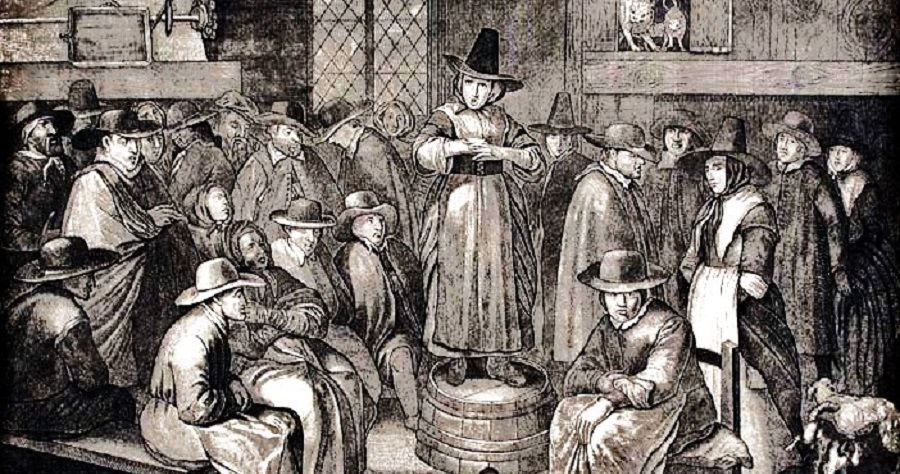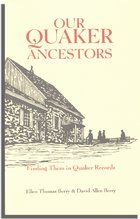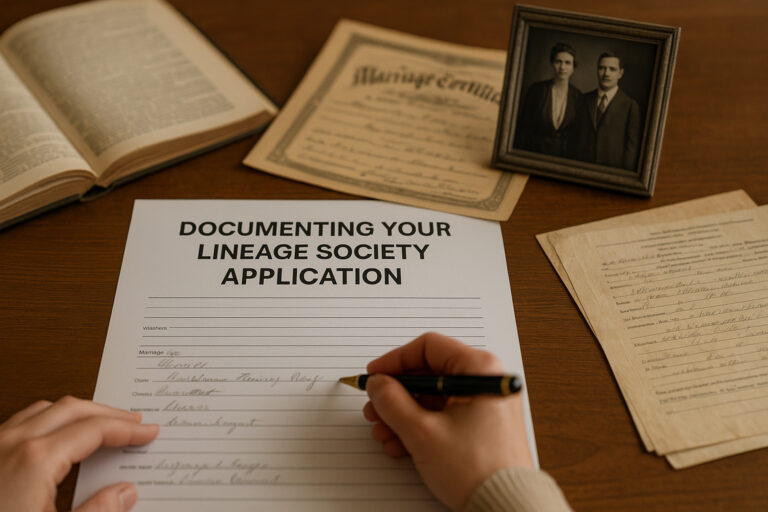
“The Quakers and Quaker Genealogy,” by Ellen and David Berry
The following article is excerpted from the Introduction to Ellen and David Berry’s book, Our Quaker Ancestors. For more information about that publication, please CLICK HERE.
The Religious Society of Friends, or Quakers, has a rich
storehouse of records kept from its beginning in the mid-1600s to the present.
There are vast differences among Quaker records, and the genealogist must
know which ones to use. The study of Quaker records is mechanically different
from that of other religious organizations. More emphasis must be placed on
historical context, because organizational history and record-keeping
are closely related. Unless you are careful–and knowledgeable–you can become
hopelessly lost and find yourself giving up on one of the richest sources of
genealogical records you could ever hope to find.
Across the U.S. are small towns with names
that have a certain rhythm or quality of sound. As you move south and west from
the eastern seaboard to the Mississippi River and beyond, through Virginia and the swamplands of the Carolinas to Georgia, you will see names like Radnor, Concord,
Salem, New
Garden, Goshen, Cedar Creek, and others which combine
Biblical and geographical origins. These names are a part of one of the most
interesting facets of early American history. They indicate that, at least
at one time, the area was populated by The Religious Society of Friends. The
Quakers were once an influential part of their communities. They moved from
their early settlements in the original eastern colonies and called their new homes
by familiar names, much as they had done when they arrived from England and Wales. In some of these towns, you
might find a rectangular building, usually
stretching east to west and facing
south, which might still be used as a meetinghouse. In all probability, it will
have the same name as the village or
town.
If you were to visit any of these meetinghouses today, you might find a record of almost every event which took place at that location from the time of its establishment. These records include information on births, marriages, and deaths, but they also note the names of residents moving to and from the area and their places of origin, as well as committee actions on a wide variety of topics, including requests to individuals to leave the meeting and the reasons for the request. In addition, there would be records of announced intentions of marriage, followed by the actual wedding record naming not only the bride and groom but all of those present, among whom may be found the parents, brothers, sisters, and perhaps other relations of the newlyweds. If the old records are not at the meetinghouse itself, it is possible to determine where they have been sent and where the original records or microfilm copies can be used by the general public. In other words, you will find a genealogist’s dream. There is an amazing number of these records in existence. You only need to know where they are and how to use them. This is the focus of [our] book.
The Religious Society of Friends began in the same religious turmoil of 17th-century England that produced the Puritans. The Quakers also immigrated to America to escape severe religious persecution. Although Quakers first saw American shores during the 1650s, it was not until 1682 that large numbers started to emigrate from the British Isles and smaller numbers from continental Europe. It was in this year that William Penn landed just south of what is now Philadelphia to exercise his proprietorship of the present states of Pennsylvania and Delaware. Because of their stubbornness or strong-mindedness (depending upon how you view it), the Quakers’ influence far exceeded their numbers. They were a study in contradictions. Although they espoused religious freedom, they required their own members to worship in a specified manner. No organization had more rules regarding removal from approved status than the Quakers. By today’s standards, these rules seem trivial and even arrogant. It now seems ironic that it was precisely this dictatorial image that the Society wanted to avoid at all costs. They were truly “plain people,” but at the same time they were shrewd merchants. Their honesty in personal and business dealings was renowned. Their treatment of the Indians is a classic study in how other white Americans should have conducted themselves. However, even in this area they were not completely faultless. They abhorred slavery, but some families owned slaves. They were against war of any kind, but still some fought in the Revolutionary and Civil Wars.
The Quakers were a more mobile society than most religious groups that came to early America. Whether their travels through the South to the Midwest were prompted by religious fervor, the clash of political and religious beliefs (e.g. slavery), or simply the desire for land and opportunities is now a moot point. The fact is they did move in large numbers, and in doing so they left a trail of records unsurpassed by any other religious organization.

There is another side to this story. The same doctrine that required record-keeping also forbade religious rituals and any form of self-aggrandizement. In the early years even grave markers were prohibited, as were personal histories (although some histories do exist, particularly of people prominent in the movement). Therefore, it is often difficult for a genealogist to place an ancestor in the proper historical perspective. However, the voluminous records more than make up for these deficiencies. It is always safe to say that anyone interested in tracing ancestors is indeed fortunate if a connection can be made with Quakers, for it means there is a good chance that comprehensive primary records can be found.




